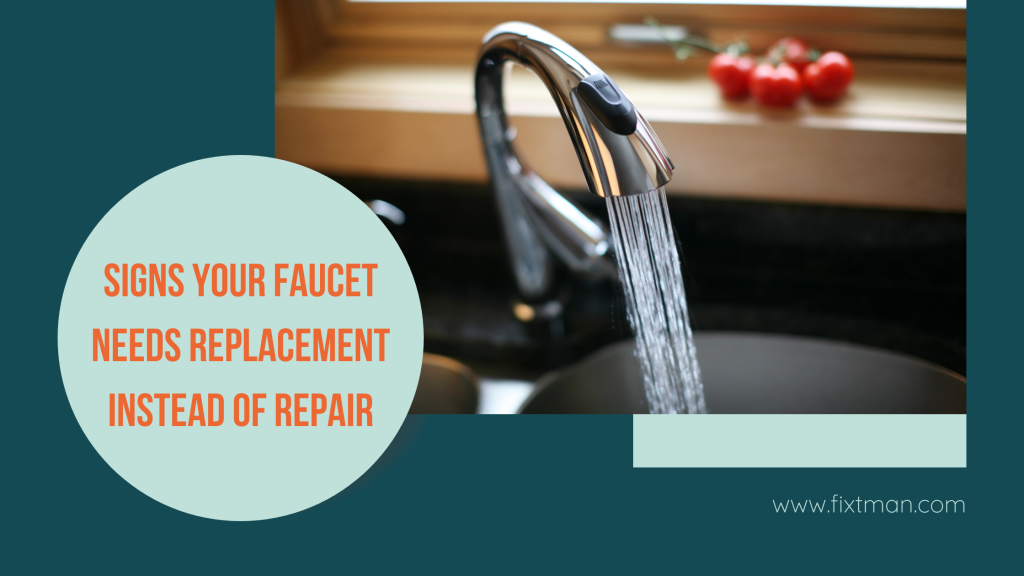A leaking faucet is a common household issue that most of us have dealt with at some point. Whether it’s a kitchen faucet leaking at base or a bathroom faucet leaking at base, we tend to delay fixing it until the situation worsens. But what happens when a simple repair isn’t enough, and you need a replacement instead? In this article, we’ll explore the signs that indicate your faucet leaks at base when turned on or other issues are more than just a quick fix.
Water Leaks and Drips
One of the most common signs of a faucet in need of replacement is persistent leakage. If your faucet is leaking from the base, especially after multiple repairs, it may be time to consider getting a new one. Let’s take a look at some specific leak-related issues that could signal it’s time for an upgrade.
Persistent Leaks Despite Repairs
A faucet leaking from base can often be repaired with new washers, seals, or gaskets. However, if the leakage continues even after attempting repairs, it may indicate a deeper issue within the faucet’s structure. For example, if you notice kitchen faucet leaking at base or bathroom faucet leaking at base after every repair, it’s a strong sign that the faucet is too damaged to function properly for much longer.
A kitchen sink faucet leaking at base or bathroom sink faucet leaking from base could also indicate that the faucet’s internal components are worn beyond repair. Continuing to replace parts may provide only a temporary solution, and replacing the faucet could save you from further frustrations.
Drips from the Spout
Another sign that your faucet may need to be replaced is consistent dripping from the spout, even after the faucet is turned off. This issue is often linked to worn-out internal seals or valve issues, which are typically signs of aging. If your faucet leaks underneath when turned on or keeps dripping long after you’ve shut off the water, replacing it with a newer model may be the best course of action.
Difficulty in Turning the Handle
If your faucet is becoming harder to operate, it could be a sign that something inside the mechanism is wearing down. Difficulty turning the handle is a common problem that typically indicates that the faucet has reached the end of its useful life.
Stiff or Hard-to-Turn Handles
If your bath tap leaking base or kitchen sink tap leaking at base is accompanied by stiff, hard-to-turn handles, it might be time to replace the faucet. Over time, corrosion, mineral buildup, or worn-out internal parts can cause the handle to become stiff or unresponsive. While two-handle bathroom faucet leaking at base can sometimes be repaired, if the handles are becoming difficult to operate, a replacement could offer a smoother, more reliable experience.
Loose or Wobbly Handles
A loose handle is not only an inconvenience but could also lead to additional damage over time. If your faucet handles wobble or come off completely, it’s a sign that the internal components holding the handle in place are deteriorating. Water leaking from faucet base can exacerbate the issue, and you may find yourself dealing with more significant plumbing problems if you don’t replace the faucet soon.
Water Pressure Issues
Water pressure problems are another indicator that your faucet may need replacement. If you’re experiencing weak or inconsistent water flow, it’s important to identify whether the issue lies with the faucet or the water supply.
Low Water Pressure from Faucet
If you notice that the water pressure coming from your sink tap leaking from base or kitchen tap leaking from base is lower than usual, this could indicate a clog in the faucet or internal components, such as mineral buildup. Over time, sediment and calcium deposits can accumulate inside the faucet, reducing the water flow and causing performance issues. If cleaning the aerator doesn’t help, replacing the faucet might be the most effective solution.
Erratic or Uneven Flow
Sometimes, faucets will deliver water in an inconsistent manner, either by sputtering or causing a sudden increase in pressure. If this happens with your kitchen faucet or bathroom faucet, it’s likely a sign of internal damage, such as a cracked valve or seal. If the issue isn’t easily fixable, or the faucet is repeatedly malfunctioning, replacement may be necessary to restore a smooth and even flow of water.
Visible Damage or Corrosion
The external appearance of your faucet is just as important as its internal functionality. If your faucet is showing signs of damage or wear, it could be time to replace it.
Rust and Mineral Buildup
Faucets that are exposed to water continuously can develop rust and mineral buildup, especially in hard water areas. If you notice corrosion or tarnishing on the faucet body, it may not only be an aesthetic issue but could also compromise the integrity of the faucet’s function. A faucet leaking from base and under sink or kitchen sink faucet leaking at base could be signs of rust or corrosion eating away at the faucet’s components, making it less reliable and harder to repair.
If your bathroom faucet leaks at base when turned on due to visible rust or corrosion, it’s likely that this damage is beyond what simple repairs can fix, requiring a full replacement.
Cracks in the Faucet Body
A cracked faucet body is one of the most serious signs that a replacement is necessary. Cracks can lead to major leaks or worse—complete failure of the faucet. If your faucet leaks at base or shows signs of cracking, it’s likely that water will start leaking out uncontrollably, damaging surrounding areas. A new faucet is your best bet to avoid further issues.
Outdated or Unmatched Design
Sometimes, the need for a new faucet isn’t about functionality, but style and practicality. Over time, the design of your faucet may no longer suit your space or needs.
Style No Longer Fits the Kitchen or Bathroom
As time goes on, you may find that your current faucet no longer matches the design of your kitchen or bathroom. If you have a kitchen faucet set that looks outdated or doesn’t match the overall style of your space, replacing it with a more modern, efficient model can improve the aesthetics of your home. This is especially true for bathroom sink faucets leaking from base—an opportunity to upgrade to a more visually appealing model that complements the rest of the room.
Difficult to Find Parts for Repairs
If you have an older faucet model and you’re finding it increasingly difficult to find replacement parts, it might be time for a new faucet. Best rated kitchen faucets and modern bathroom faucets are typically easier to maintain due to a more widespread availability of parts. When parts are hard to come by, replacing the faucet entirely can be a more cost-effective solution in the long run.
Frequent Repairs and High Maintenance Costs
If you’re constantly fixing the same issues with your faucet, it’s likely that the cost of repairs is starting to add up. Sometimes, replacing the faucet is the most practical and economical option.
High Costs of Frequent Repairs
If you’ve had to repair your faucet leaking from base multiple times, the costs of those repairs can accumulate. This is especially true if you need to replace washers, seals, or valves repeatedly. At some point, continuing to fix an old faucet becomes more expensive than simply replacing it with a new one.
Inconsistent Performance After Repairs
If after every repair, your bath tap leaking base or faucet leaks at base still doesn’t work correctly, the faucet’s internal components are likely beyond repair. Inconsistent performance, such as water not turning on properly or leaks that return quickly, means it’s time to retire the old faucet and invest in a best kitchen faucet or bathroom tap leaking at base replacement.
In conclusion, while many faucets kitchen faucets can be repaired, there are several signs that indicate it’s time to replace your faucet rather than continuing to patch it up. Persistent leaks, difficulty with the handles, water pressure issues, and visible damage are all red flags that may point to a new faucet being the better solution. By recognizing these signs early, you can avoid further damage to your plumbing and ensure that your kitchen or bathroom remains functional and stylish for years to come.



